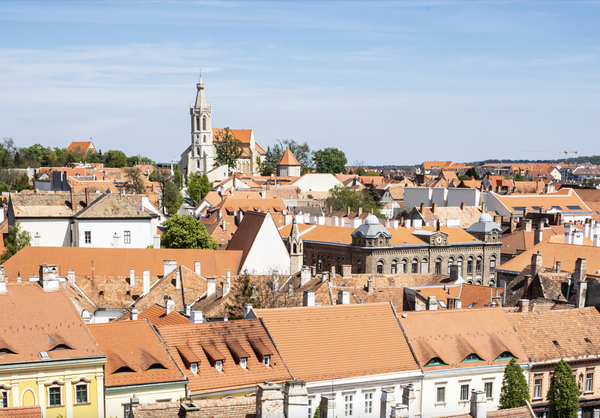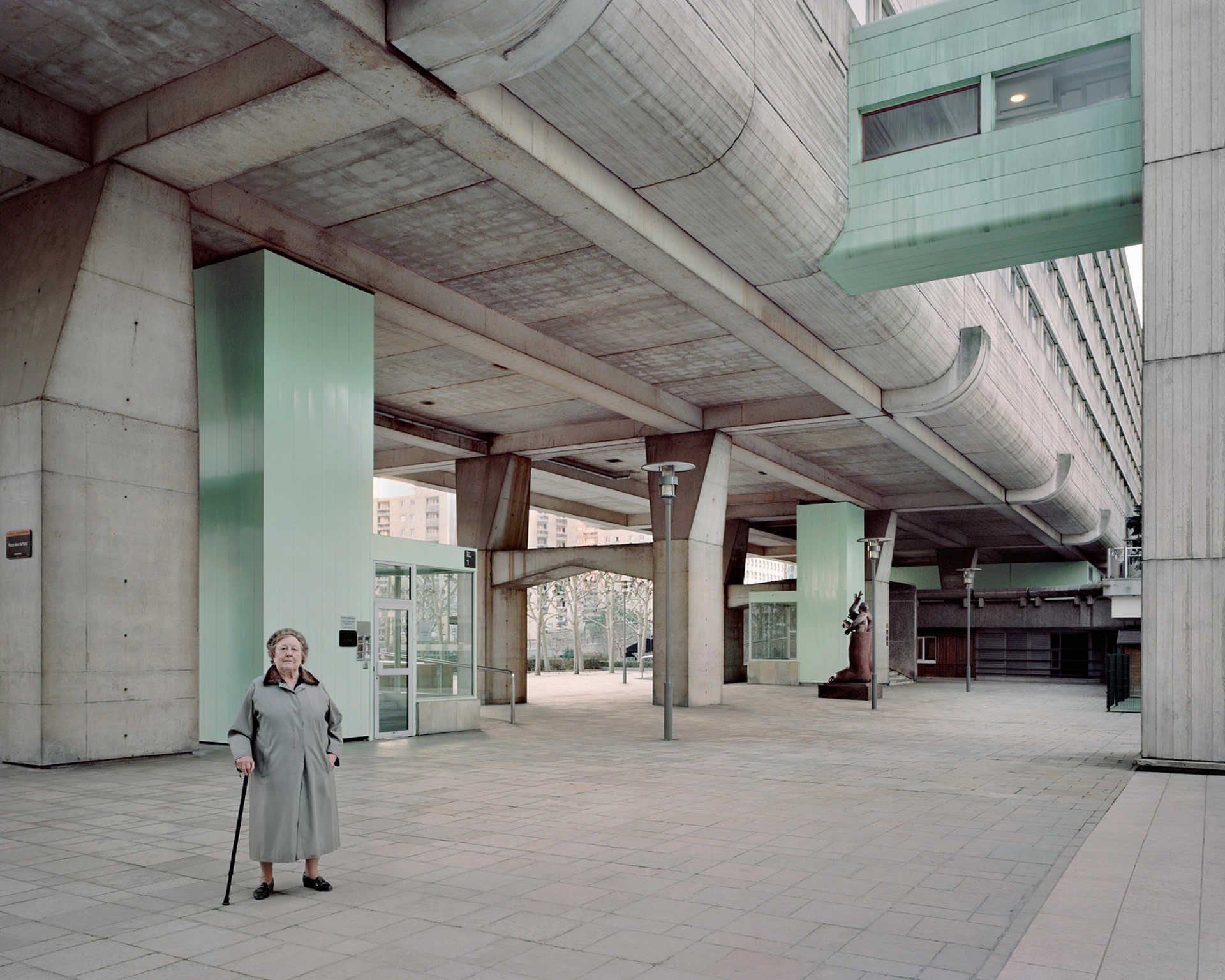A place founded on the basis of an ideology—perhaps this is the easiest way to define utopian cities, but these settlements are interesting not only because of their social significance, but they embody very special ideas. Whether it’s a postapocalyptic place or a spiritually separate commune, it can make you feel like you’re in another universe.
The relationship between architecture and utopia fascinated thinkers in ancient Greece and the Middle Ages, but it was in the Renaissance that the idea of the ideal city really took off: geographically an absolute fiction and socially an ideal image, in which communist equality reigned. One of the most famous conceptual definitions in the 15th century was created by Thomas More in his satire on literature and social policy called Utopia, according to which utopian polis is typically an organized city describing an imaginary community or society, which has very promising or almost perfect characteristics.
Although the theory of the utopian city is widespread from Aristotle to Classicism, only significantly few plans have been implemented in practice. At the end of the 19th and early 20th centuries, large urban planning projects improved the ideal urban ideas, which consisted of administratively and socially emphasized plans with a futuristic atmosphere. From an architectural point of view, it is important to mention the modernist expansion—mostly brutalist or functionalist buildings without decorative elements.
Perfect architecture or failed utopias?
Speaking of urban planning and functionalism, we must mention the name of the Swiss architect Le Corbusier. Accumulating his architectural success, he gradually devoted more time to his urban planning ideas as a result of historical events, when in 1922, he presented the city concept of Ville Contemporaine, the model of the city with a population of three million. Basically, he thought that the new modernist architecture provides an organizational solution to improve the quality of life of the working class. The central element of the plan was the group of sixty-story cross-shaped skyscrapers, which rose as high office towers over lower blocks of flats, all surrounded by a green park area—according to Le Corbusier, this could result in an urban organism that had never been seen before. In the end, the plan was not a great success, but the suggestions continued.
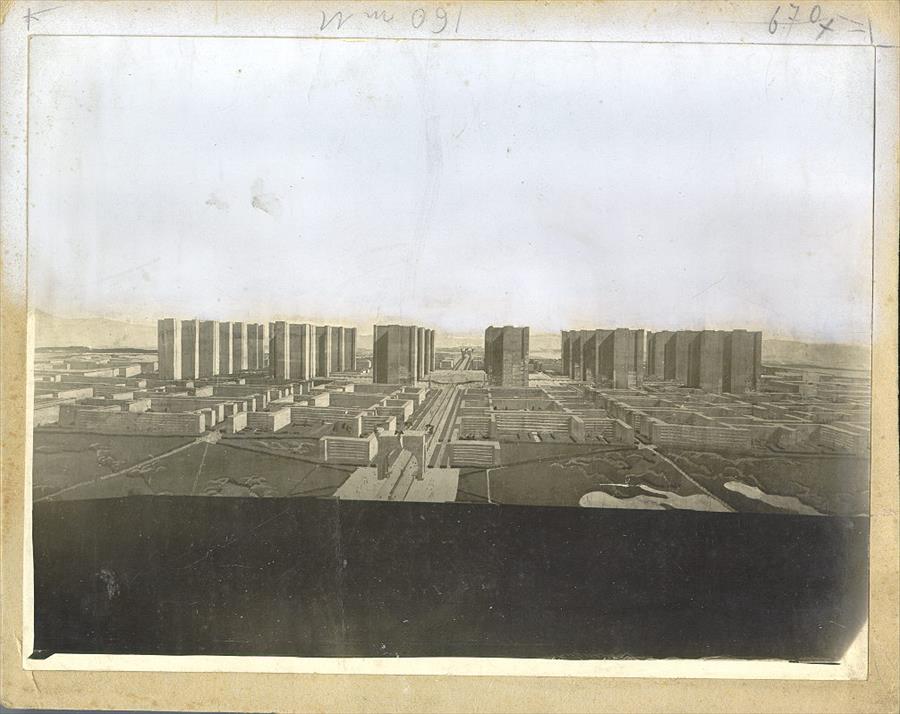
Photo: Foundation Le Corbusier / © FLC/ADAGP
In the 1930s, Le Corbusier redefined his vision of urbanism by designing the Ville Radieuse as a linear and orderly metropolis of the future. The layout of the ideal city was inspired in an abstract way by the physical arrangement and functions of the human body, so it basically became like a living organism, consisting of organized parts that cooperated as a whole. The design kept the multi-story residential blocks, the open spaces, the underground urbanism and the abundant green space that it had proposed in its previous works, and would have separated the industrial and residential areas—thus ensuring the relaxation of the residents. Despite the perfectly developed concept, the project could not be implemented, but it undoubtedly had an impact on its own plans and those of others.
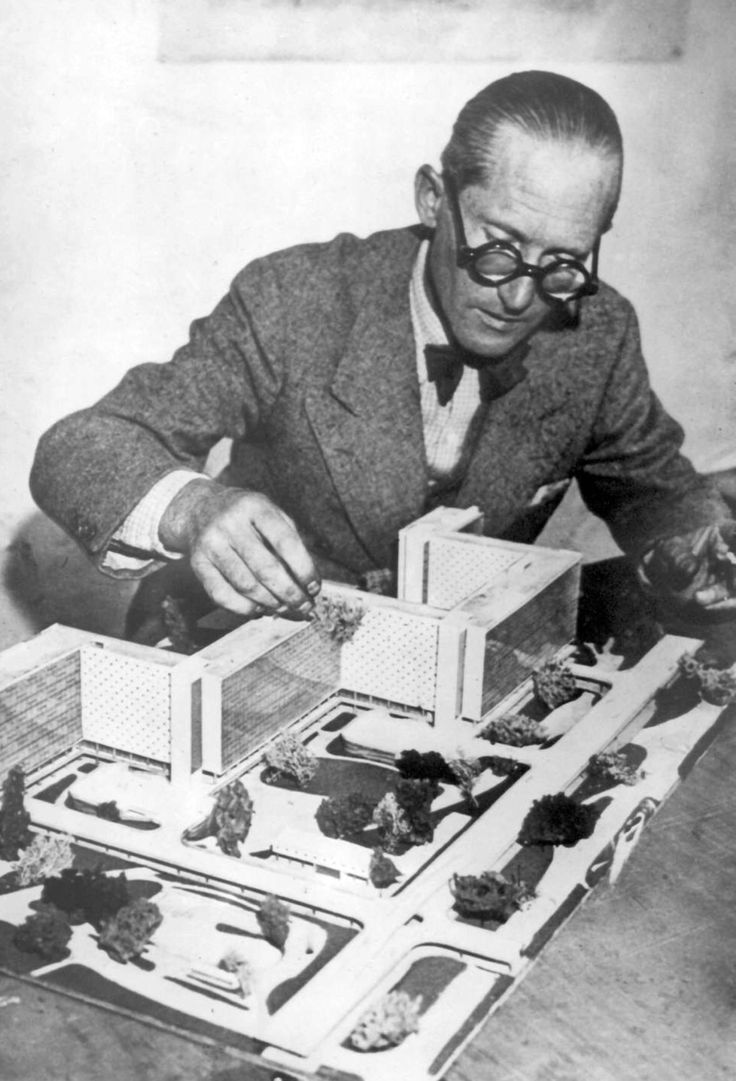

Photos: 99 Percent Invisible
We can also boast of similar ideas in Eastern Europe: over the city center of Shumen in Bulgaria, a huge concrete tower rises from all corners of the city. The enormous urban planning project, officially called Central City Square, was intended as a revolutionary experiment in which many elements of Le Corbuiser’s Ville Radieuse are reflected, from underground infrastructures through the vertical village phenomenon to the symbol of human organization. For political reasons, the construction has not been completed, so those who venture into this area do not find utopia, but the proliferating war of abandoned spaces and winding concrete corridors.
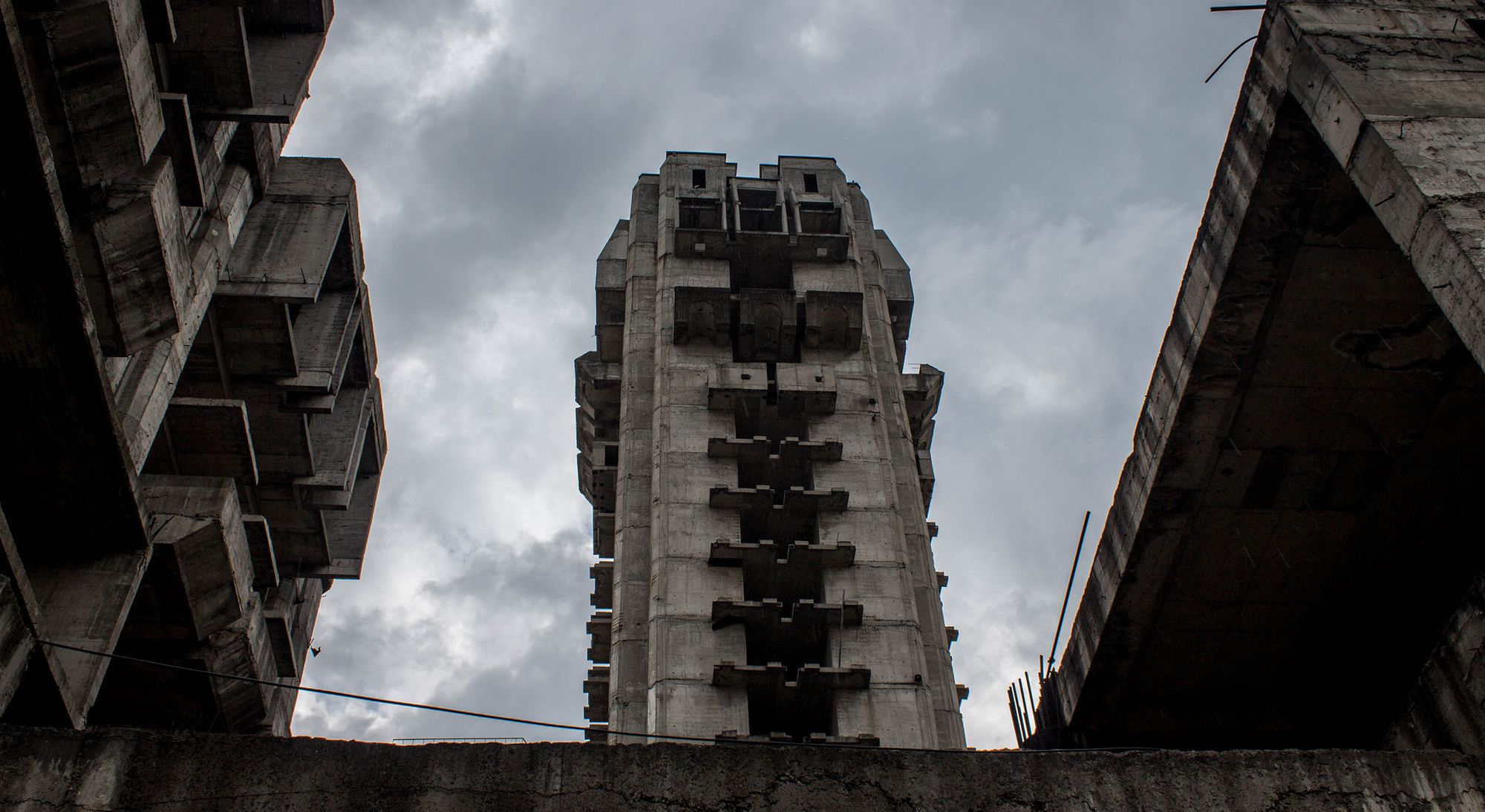
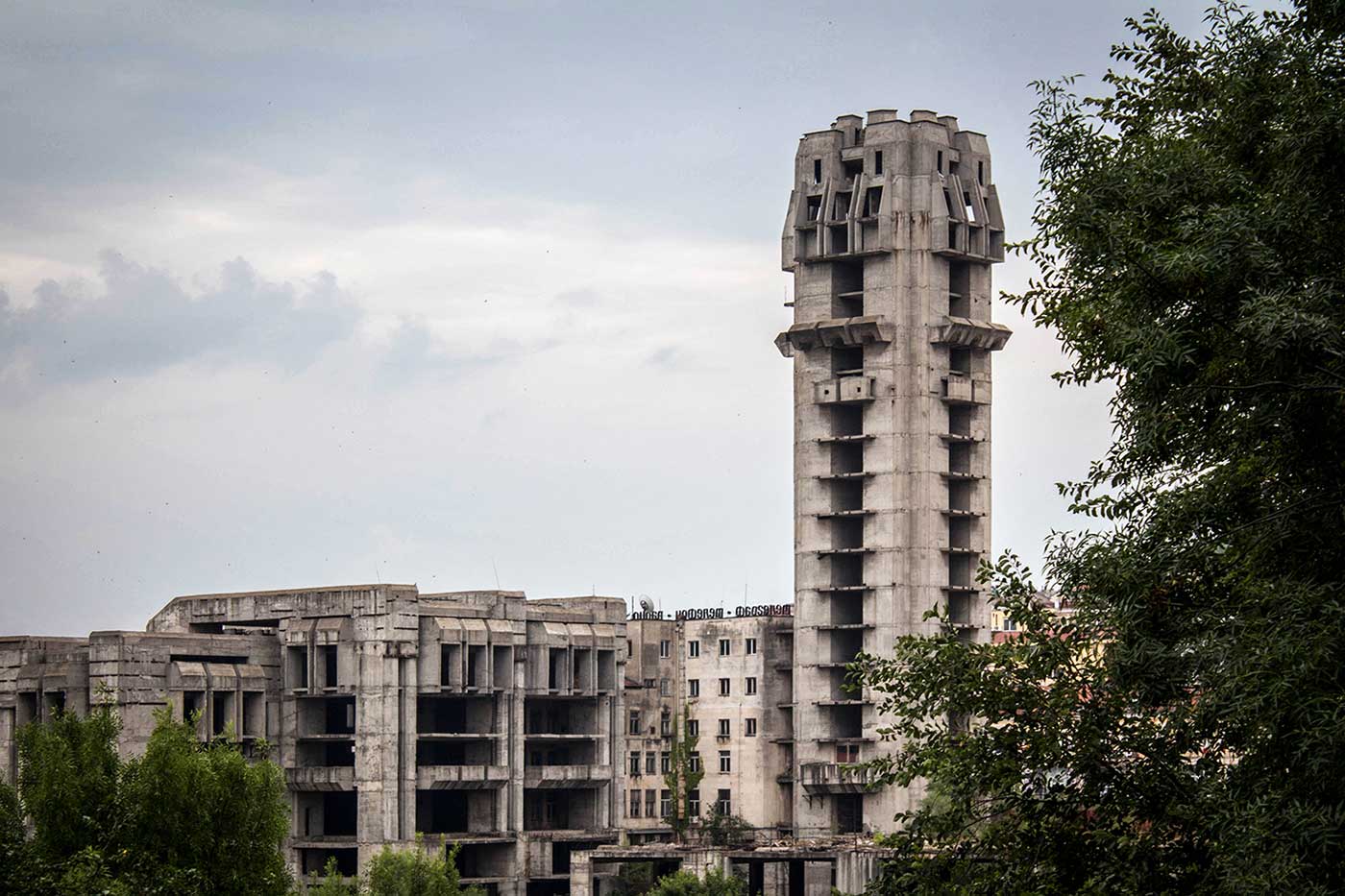
Photo: Ex Utopia
As the previous examples have shown, there are utopian cities that have never been implemented, but sometimes the reverse is also true: the futuristic atmosphere of the built yet empty ghost cities evokes another world. In the series by French-born but Warsaw-based Raphael Olivier, A Failed Utopia, we can see the buildings of an abandoned Chinese city, “New Ordos”, which perfectly illustrates the disharmony of architecture and population—or rather the lack of the latter. A city built in the early 2000s in the outskirts of Ordos, the aim of which was to establish the cultural center of the region with the most modern architectural elements. As a result of the millions of dollars of investments, house prices had gone through the roof, so there was no longer any interest in relocating. The metropolis is referred to as East China Dubai and the perfectly designed houses have been inhabited ever since. According to the photographer, the whole place is like a post-apocalyptic space station from a science fiction movie.
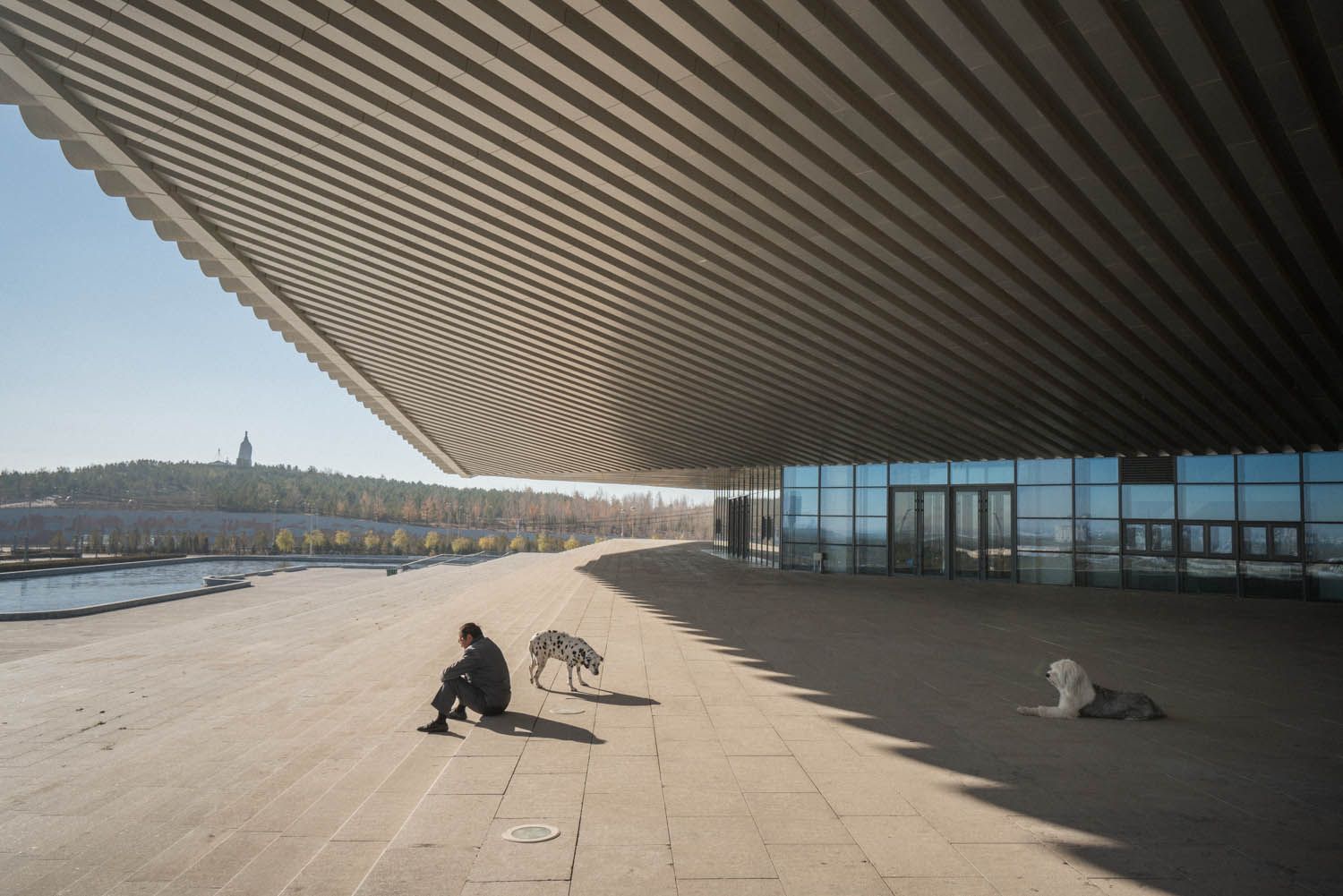
Photos: Warsaw Photographer / Raphael Olivier: Ordos—A Failed Utopia
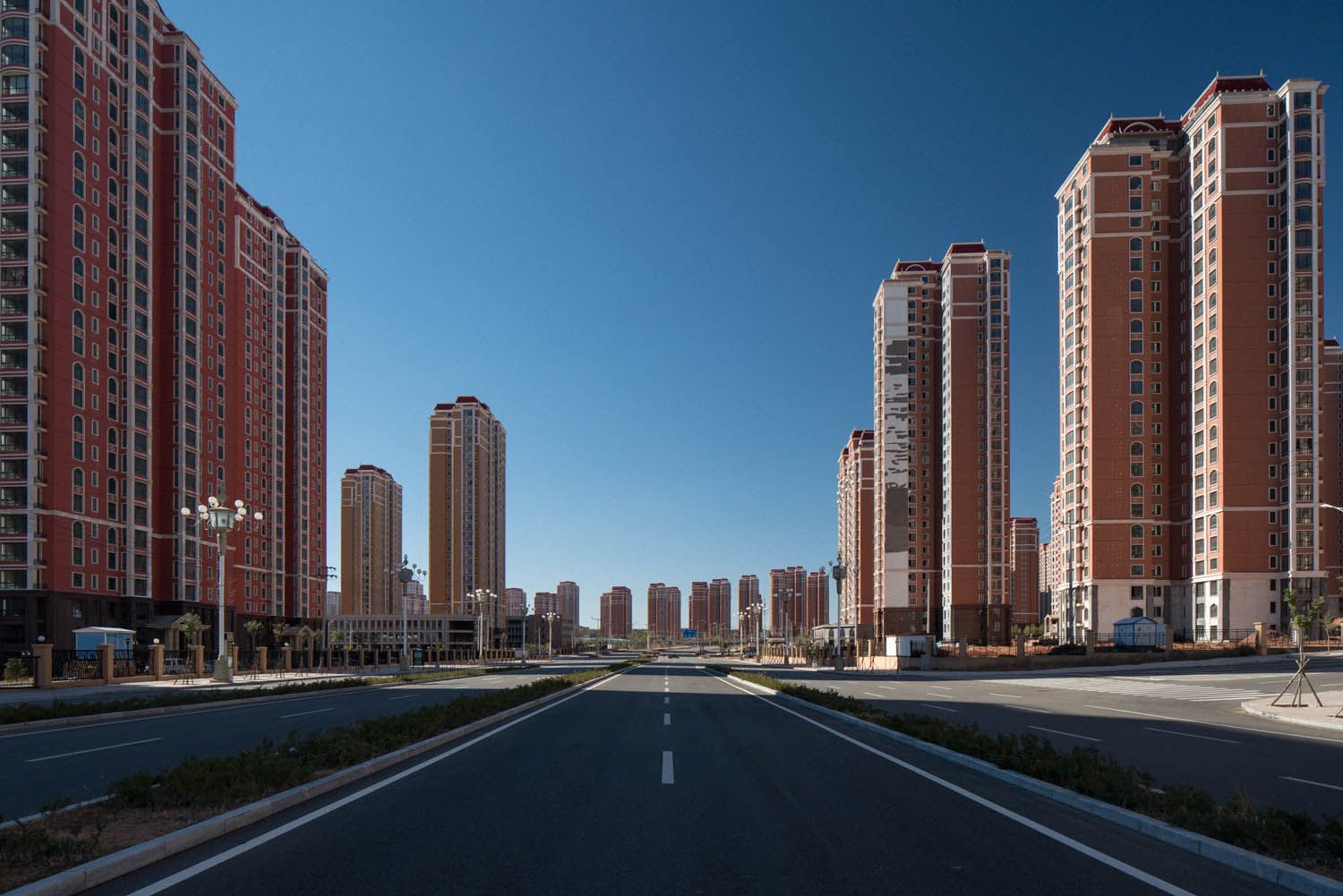

Photos: Warsaw Photographer / Raphael Olivier: Ordos—A Failed Utopia
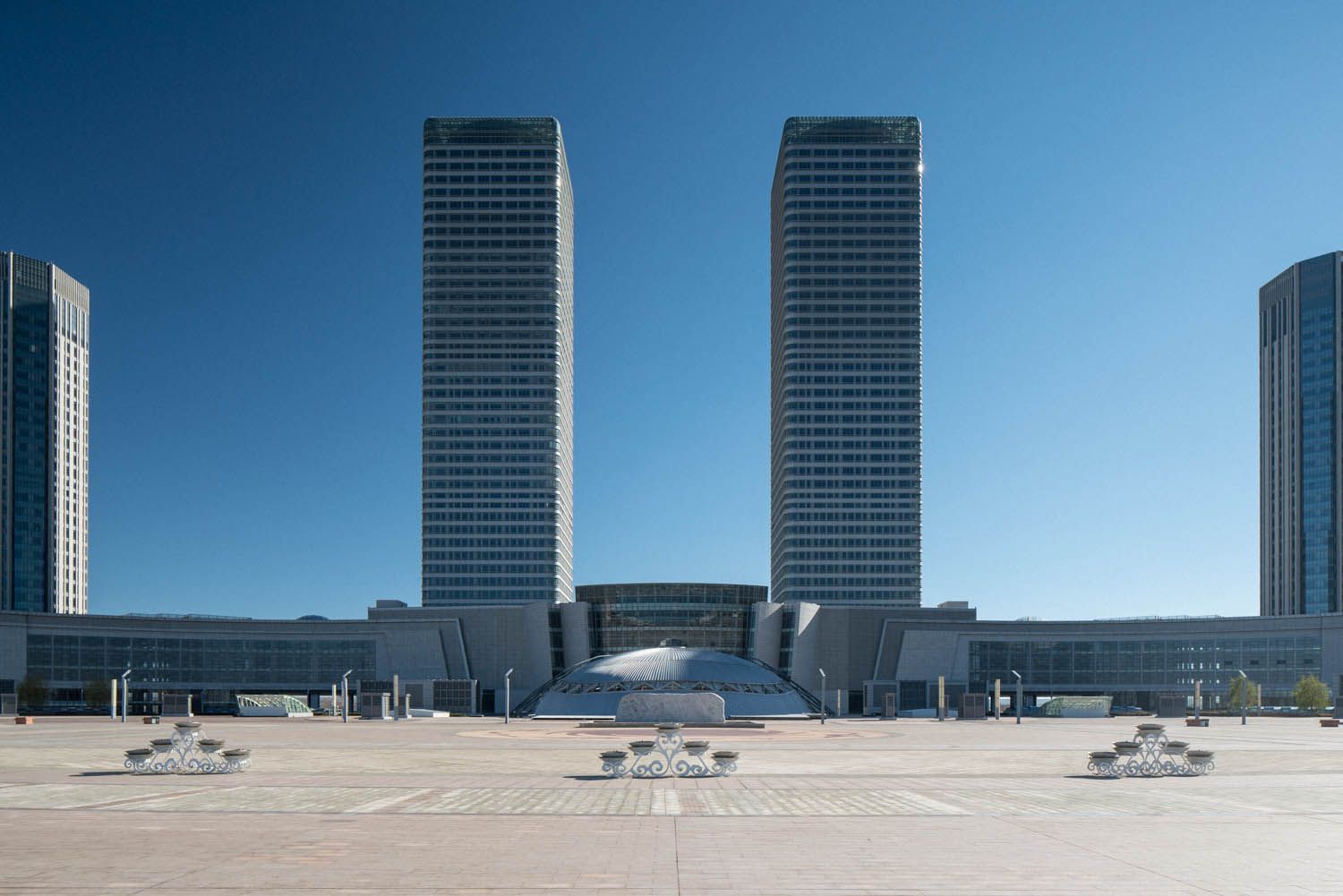
Photo: Warsaw Photographer / Raphael Olivier: Ordos—A Failed Utopia
“Concrete Utopia”
Returning to the Eastern European and Balkan regions: in 2018, the Museum of Modern Art processed the urban development, architectural excellence and everyday life of Yugoslavia, located between the capitalist West and the socialist East, in parallel with the social construction in the decades following the Second World War. Skyscrapers and brutalist futuristic facilities play a major role, which take you to another dimension.
Source: Youtube channel of MoMA
Utopian cities
Harmony, peace, spirituality—these are the most important concepts in Auroville, India, founded in the sixties by Mira Alfassa, a spiritual guru in the middle of Tamil Nadu, India. The city is one of the most well-known spiritual centers in the world, which is also a city where they have been working for more than fifty years to create a new model of life, of existence. Breaking with the moral and social dogmas, this utopian city initially consisted of a small group of people who wanted to focus on their inner being and ignore the dictates of the outside world. Today, it has grown into a city of thousands of people, centered on an innovative and environmentally conscious spiritual center.
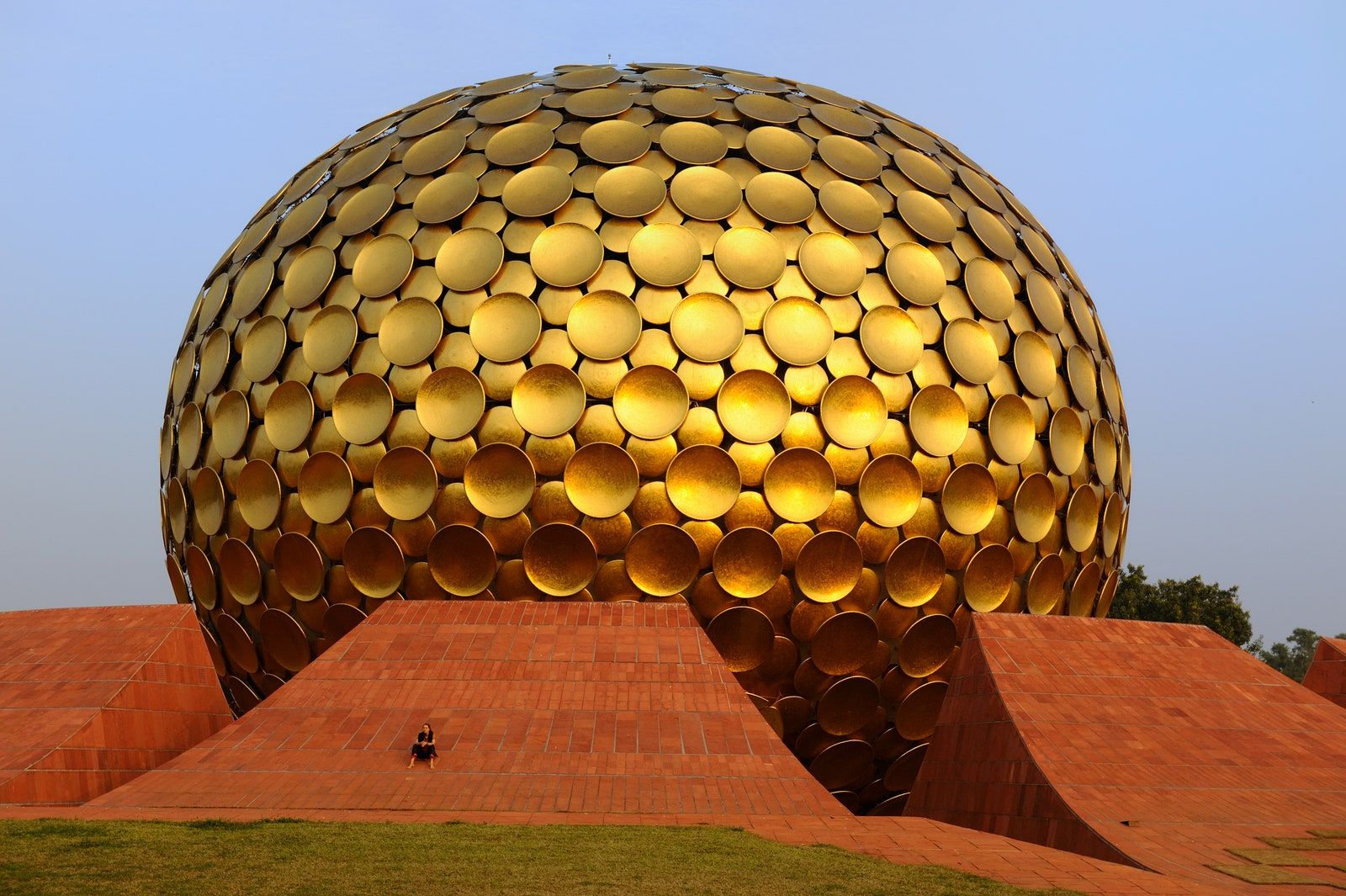
Photo: Frédéric Soltan
Most films with a dystopian atmosphere are shot in artificially created locations, for understandable reasons, since their aim is to guide the viewer to a completely different universe. A partial exception to this is the Hunger Games, some of which take place in a housing estate near Paris. Located next to the French capital, there is the Grands Ensembles, a postmodern neoclassical housing estate that gives the feeling of arriving in a different timeline. The suburb was built in the fifties and eighties to cope with the city’s housing crisis, so mostly foreign and rural immigrants lived here at the time. Nowadays, it is mostly inhabited by pensioners who live in symbiosis with the aging objects around them. The feeling of nostalgic utopia is evoked in the series of Laurent Kronental, a French photographer, in which he conveys the passing of time with bittersweet charm.
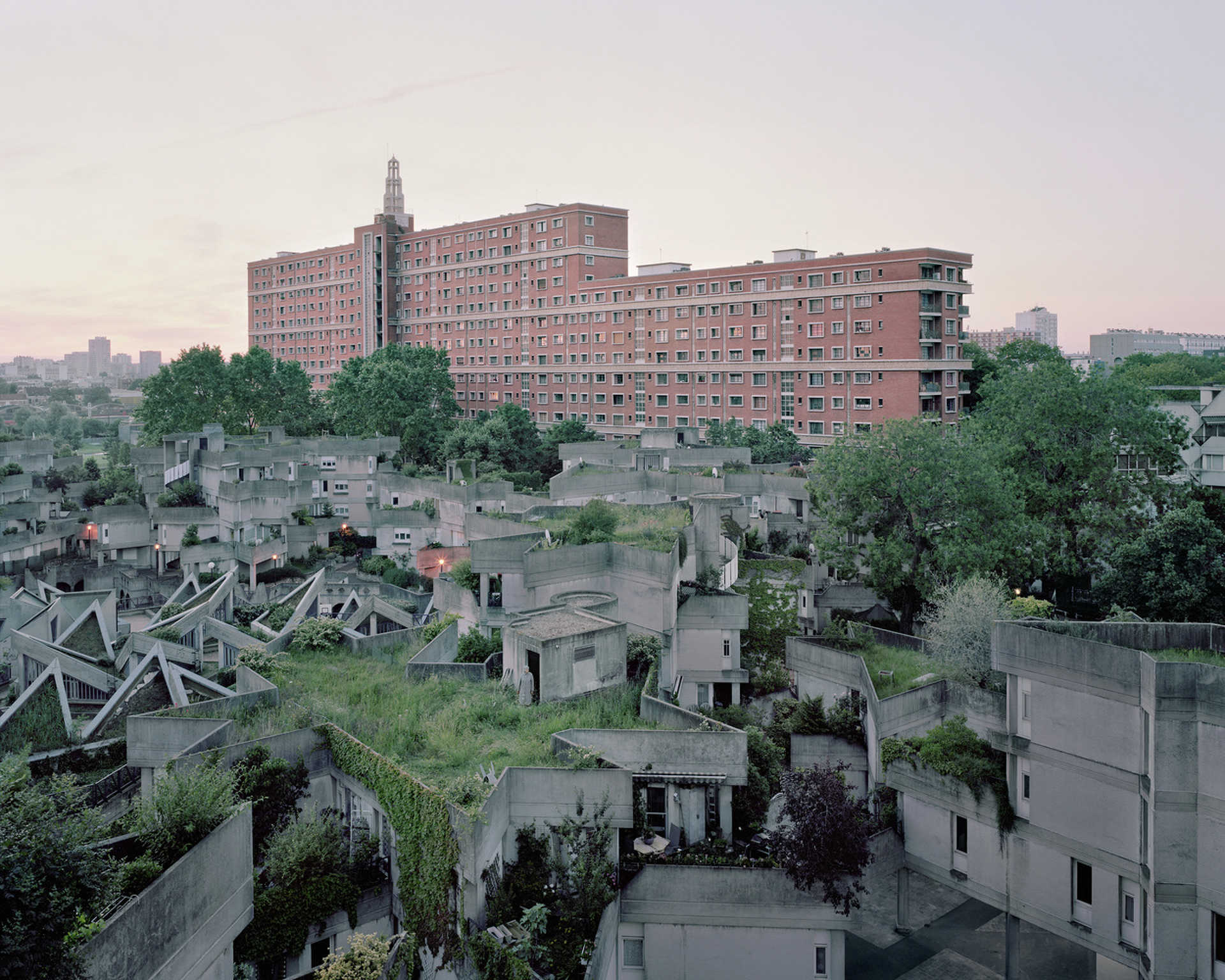

Photos: Laurent Kronental—Souvenir d’un Futur
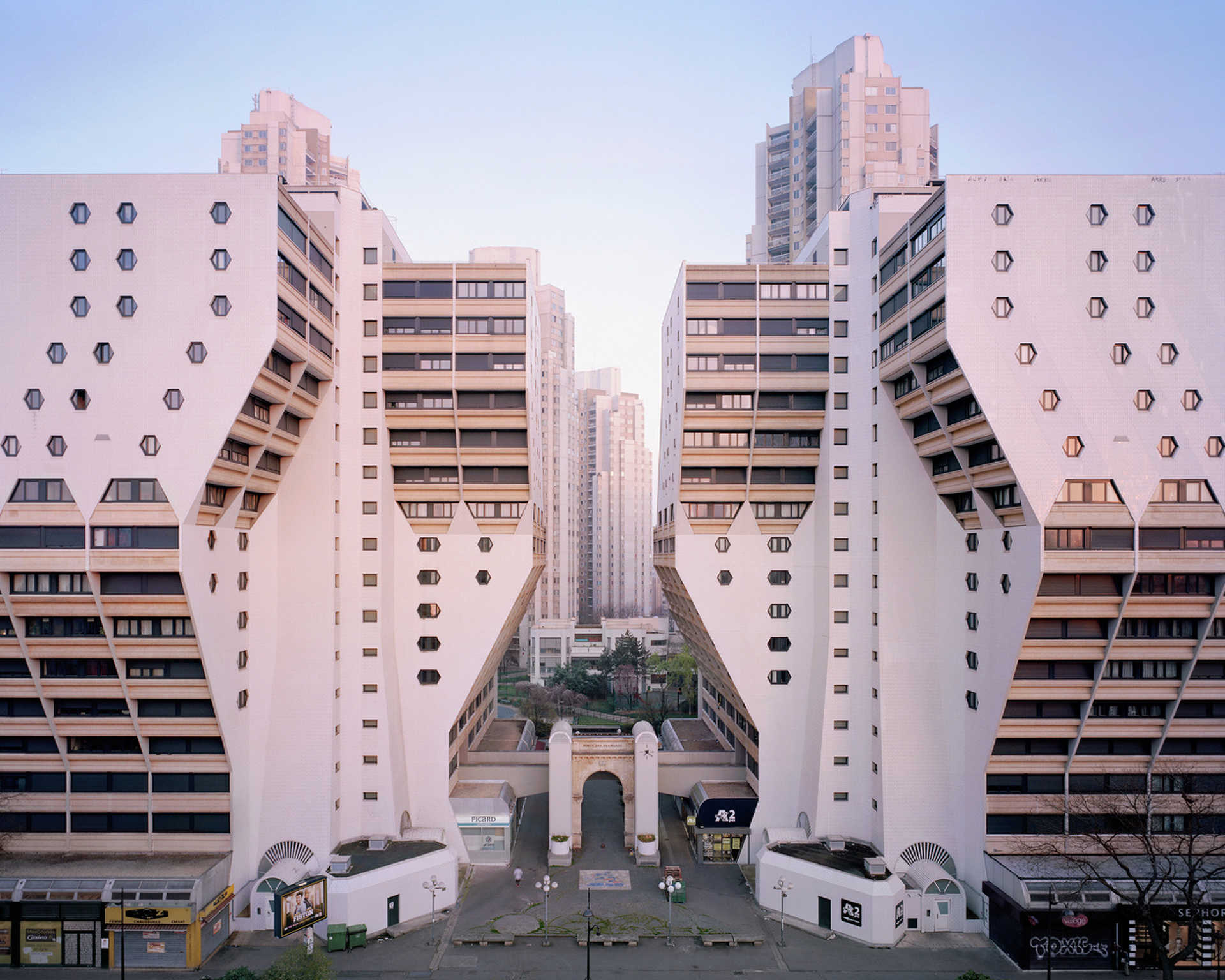
Photo: Laurent Kronental—Souvenir d’un Futur
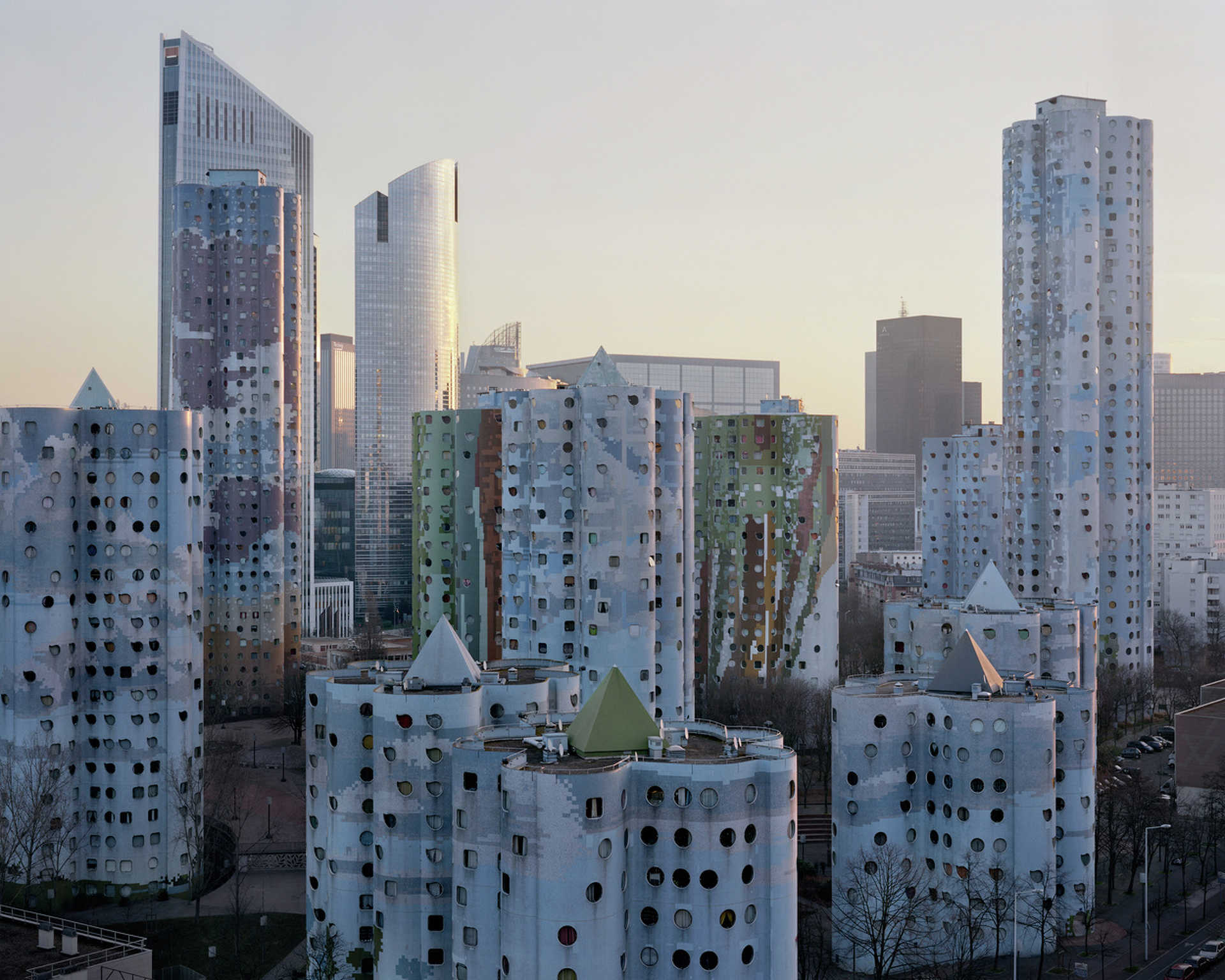
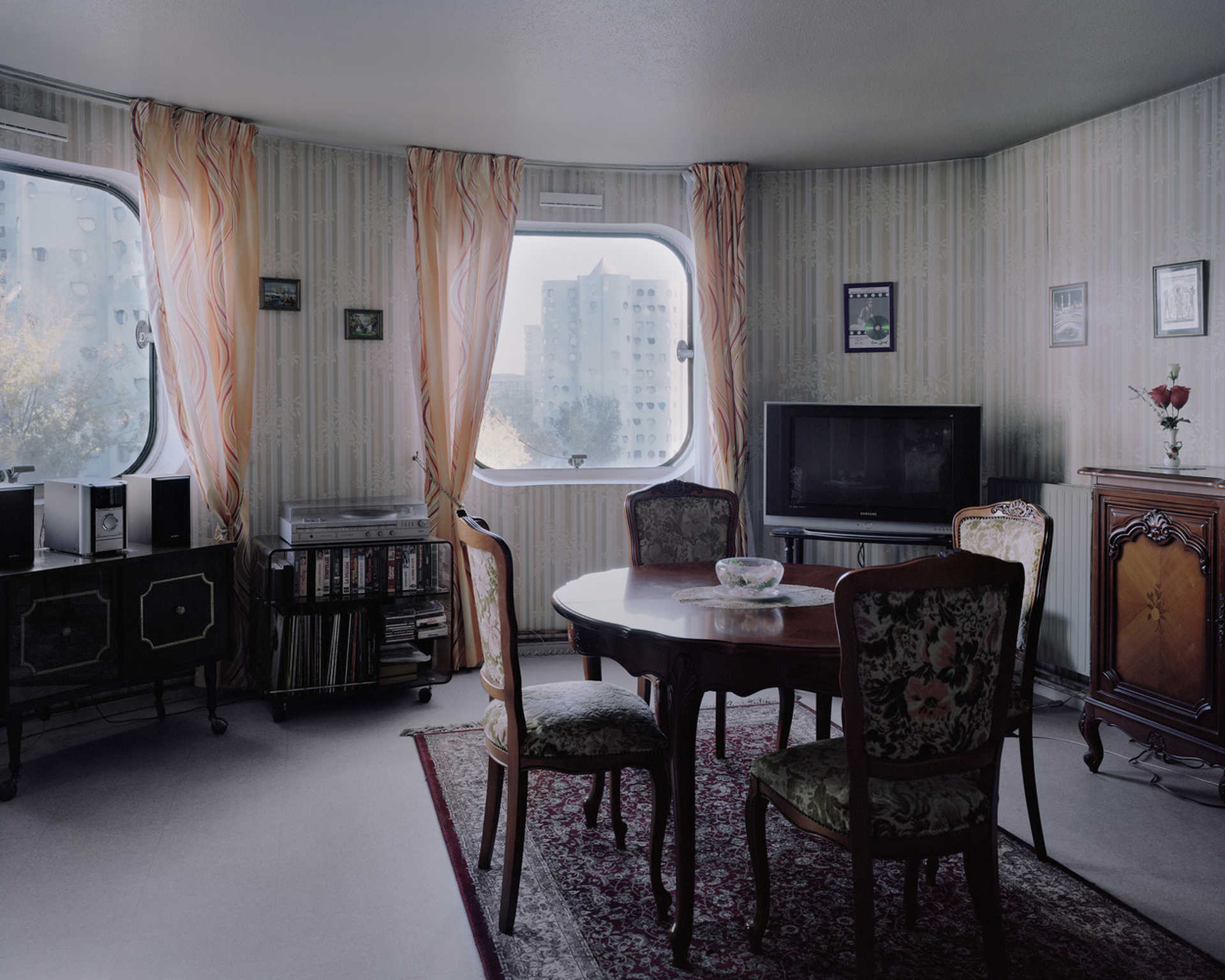

Photos: Laurent Kronental—Souvenir d’un Futur

Photo: Laurent Kronental—Souvenir d’un Futur
From meditation through permaculture to relation with nature, Scottish Findhorn is the inspiration for a wide range of learning and skills development. The nearly 400-member community of the spiritual eco-village is best known for its work on plants and nature. There is no strict doctrine or idea that affects the population, and their goal is to implement small and medium-sized projects and workshops that promote sustainable agriculture and the efficient exploitation of natural resources.
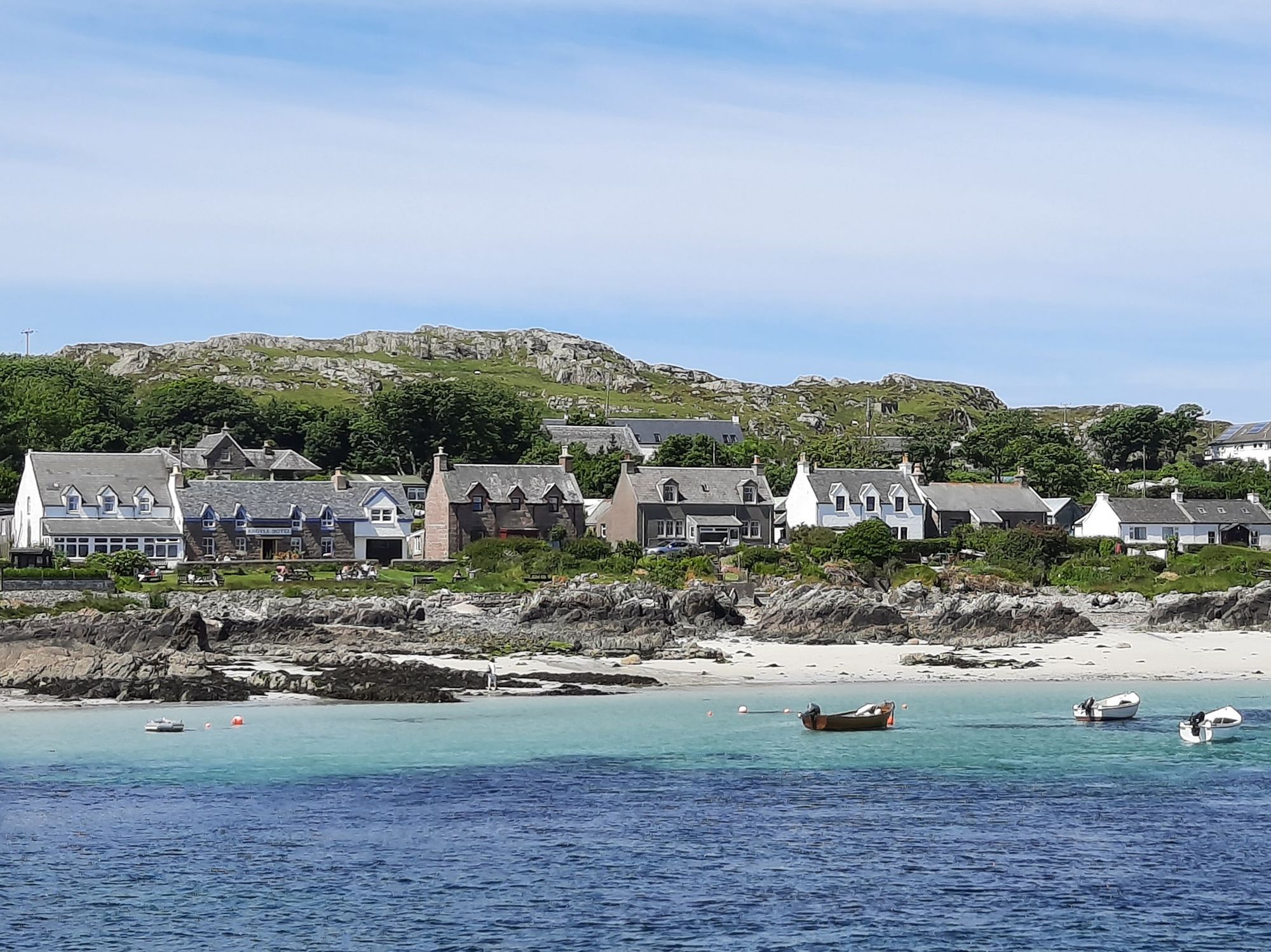
Photo: Findhorn Foundation
Artificially created in the desert of Arizona, Arcosanti was born in the 70s from the imagination of architect Paolo Soleri, but it is still unfinished, so it waits for those who want to retreat. Soleri’s ideal city is sustainably integrated into nature, aiming to achieve a saving lifestyle and a minimum ecological footprint. Arcosanti creates sustainable urban living conditions for people, with alternatives that will be healthy for all communities, without polluting the environment—the perfect example is the solar-heated house. The population of the utopian city varies, in warmer seasons external visitors are frequent, during this period art groups and various performances are also present in the desert.
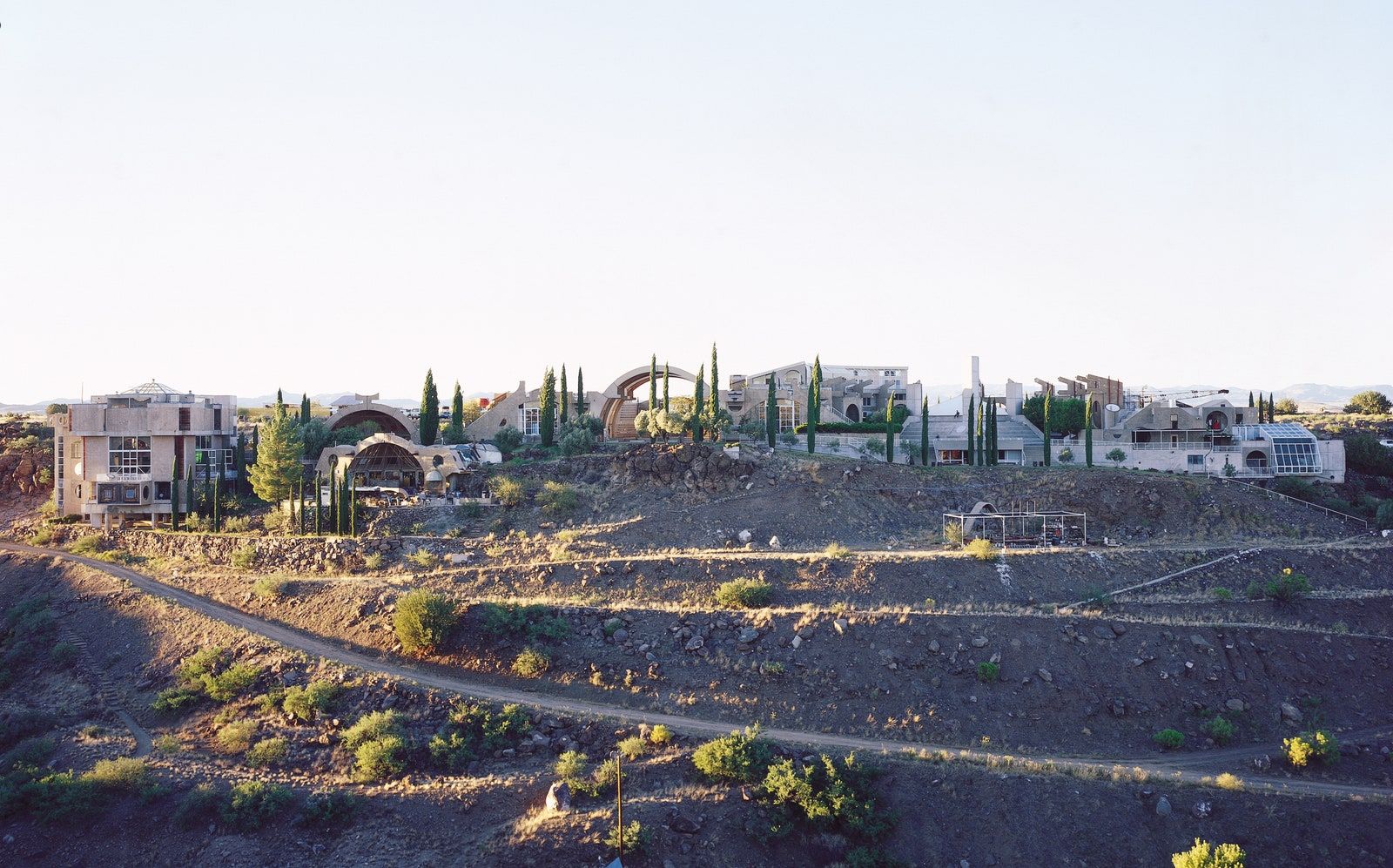

Photos: Vogue
Laurent Kronental | Web | Instagram
Warsaw Photographer / Raphael Olivier | Web | Instagram
Source: Dezeen, Ex Utopia, Museum of Modern Arts, Lens Culture, Vogue, 99 Percent Invisible
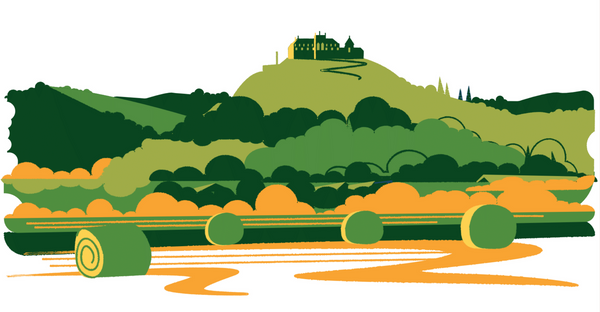
Essence of Hungary | Tokaj
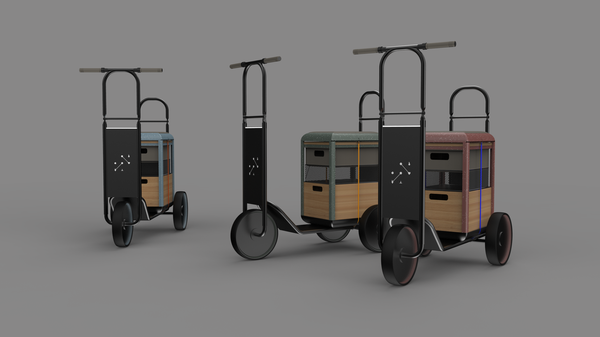
Best of Stefan Lengyel 2022 | MOME—Design Institute
